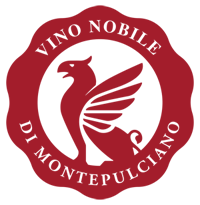CLIMATE CONDITIONS
The 2012 season began with a rather dry winter, following the tendency of the previous year in which recorded precipitation was lower than the annual average. Regarding rainfall distribution, autumn/winter 2011/2012 saw extremely modest precipitation in October and December, and there was practically no rainfall at all in November 2011 and in January 2012.
February’s snowfalls, notably abundant in some areas, were not enough to make up for the preceding deficit in rainfall. The month of March was almost entirely without rainfall, and the temperatures were mild: these conditions led to the bud break occurring slightly earlier than anticipated, between the end of March and the first ten days of April in all the vine varieties. There were more significant precipitations in the months of April and May, ensuring that the plants had enough water to draw on.
From a temperature point of view, April and May were rather cool, so much so that some damage caused by late frosts was recorded in limited areas at the bottom of the valley. The summer began with above average temperatures for the time of year, continuing the tendency towards dry and torrid weather conditions. The first signs of water stress were already being observed in June in some areas, slowing down the development of the vegetative wall.
The onset of ripening in the Sangiovese grapes was first noted in the last days of July. The ripening process then slowed owing to the high temperatures and dryness. The rains didn’t come back until the last days of August, and they continued into September. This allowed for a good final ripening of the grapes, and partial replenishment of the water reserves in the soil.
The weather conditions meant that vines in some areas displayed evident signs of distress, while in other areas the effects were less notable, depending on the agricultural practices adopted, and on the water capacity of the soil. Notwithstanding the prolonged heat, the grapes didn’t suffer from any noticeable burn damage, thanks to the absence of any particularly high peak temperatures. The weight of the harvested grapes was lower than usual, owing to the general lack of water, and the skin/pulp ratio was higher, meaning that less must was produced. This was the most evident consequence of the year’s particularly dry weather: the Sangiovese produced smaller grape bunches and grapes than the average harvest. This has led to a reduced production of grapes per plant, resulting in the expected increase in the qualitative levels of the grapes and musts – reduced production is associated with an increase in the quality of the grape. No particular problems were observed from a phytopathological point of view. The phenological phases for the Sangiovese were as follows:
– bud break: late March – early April;
– flowering: end of May;
– onset of ripening: last ten days of July;
– ripening complete: last ten days of August.
The wines of 2012
It is still too early to fully evaluate the 2012 wines. Most of the vines and grapes avoided unduly suffering the effects of this year’s unusually dry climate, and the quality of these grapes was excellent, with sugar contents that were not excessive, supported by good acidity and excellent polyphenolic concentrations. Thanks to these characteristics, the fermentation processes have been excellent.
The increased presence of tannins means that cellar operations have to be conducted with particular care during fermentation in order to achieve balanced wines – the 2012 vintage promises an excellent varietal and territorial expression. The colour intensity values and the polyphenolic fractions values are particularly good, as a result of the reduced size of the grapes and the resulting higher skin/pulp ratio.


